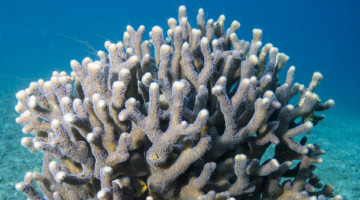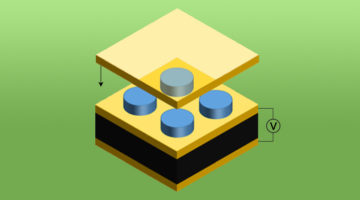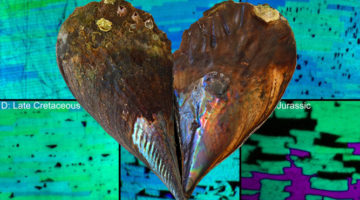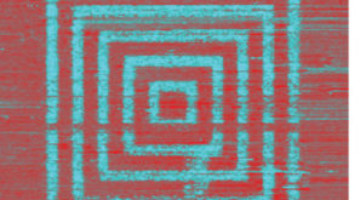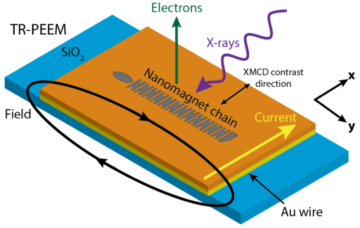Researchers designed and fabricated a nanomagnet array in which competing (“frustrated”) magnetic interactions can be directly tuned. Frustrated interactions are key to a wide range of phenomena, from protein folding and magnetic memory to fundamental studies of emergent exotic states. Read more »![]()
![]()
ALS Work Using PEEM
The Microstructure of a Parrotfish Tooth Contributes to Its Toughness
Parrotfish chew on coral, producing hundreds of pounds of sand each year. Mapping the microstructure of parrotfish teeth, scientists found bundles of crystals interwoven like chain mail. The results provide a blueprint for creating ultra-durable materials for mechanical components that undergo repetitive contact, movement, and abrasion. Read more »
Coral Exoskeleton Growth Begins Inside Living Tissue
Researchers have discovered some good news regarding corals: the mechanism by which their exoskeletons grow may help them resist the effects of ocean acidification. The discovery, made with PEEM studies, has ramifications not only for the health of coral reefs, but for applications such as 3D printing as well. Read more »![]()
![]()
X-Rays Reveal the Biting Truth About Parrotfish Teeth
A parrotfish’s hardy teeth allow it to chomp on coral all day long, ultimately grinding it up through digestion into fine sand. Researchers wanting to see how the fine crystal structure of parrotfish teeth contribute to their incredible strength were able to visualize the orientation of individual crystals, which showed their intricately woven structure. Read more »
Electrical Switching of Magnetic Vortex Circulation
Photoemission electron microscopy (PEEM) experiments have demonstrated that the circulation direction of a magnetic vortex can be switched by the application of an electric field, opening the door to digital devices with more streamlined system designs, improved performance, and greater energy efficiency. Read more »![]()
![]()
Amorphous calcium carbonate particles form coral skeletons
Skeletons of Stylophora pistillata corals form by the attachment of amorphous calcium carbonate precursor particles, formed within the coral tissue, to the coral skeleton surface. This mechanism is faster than the precipitation of ions from solution and may render the corals less susceptible to ocean acidification than previously assumed. Read more »
Ancient Ocean Temperatures Recorded in Mother-of-Pearl
Researchers have shown that the thickness of the nacre, or mother-of-pearl, that lines the insides of mollusk shells can be used to estimate ocean temperatures as far back as the early Jurassic period. X-ray studies of modern and ancient shells help establish the method’s feasibility. Read more »
New Multiferroic Material for Ultralow-Power Electronics
Scientists paired ferroelectric and ferrimagnetic materials so that their alignment can be controlled with a small electric field at near room temperatures, a major step in the development of ultralow-power microprocessors, storage devices, and next-generation electronics. Read more »![]()
![]()
A Conscious Coupling of Magnetic and Electric Materials
Scientists have successfully paired ferroelectric and ferrimagnetic materials so that their alignment can be controlled with a small electric field at near room temperatures, an achievement that could open doors to ultralow-power microprocessors, storage devices and next-generation electronics. Read more »
Signal Speed in Nanomagnetic Logic Chains
A time-resolved x-ray imaging technique directly observes signal propagation dynamics in nanomagnetic logic (NML) chains. The technique can assess NML reliability on fast time scales and help optimize chain engineering for this promising ultralow-power computing architecture. Read more »![]()
![]()


